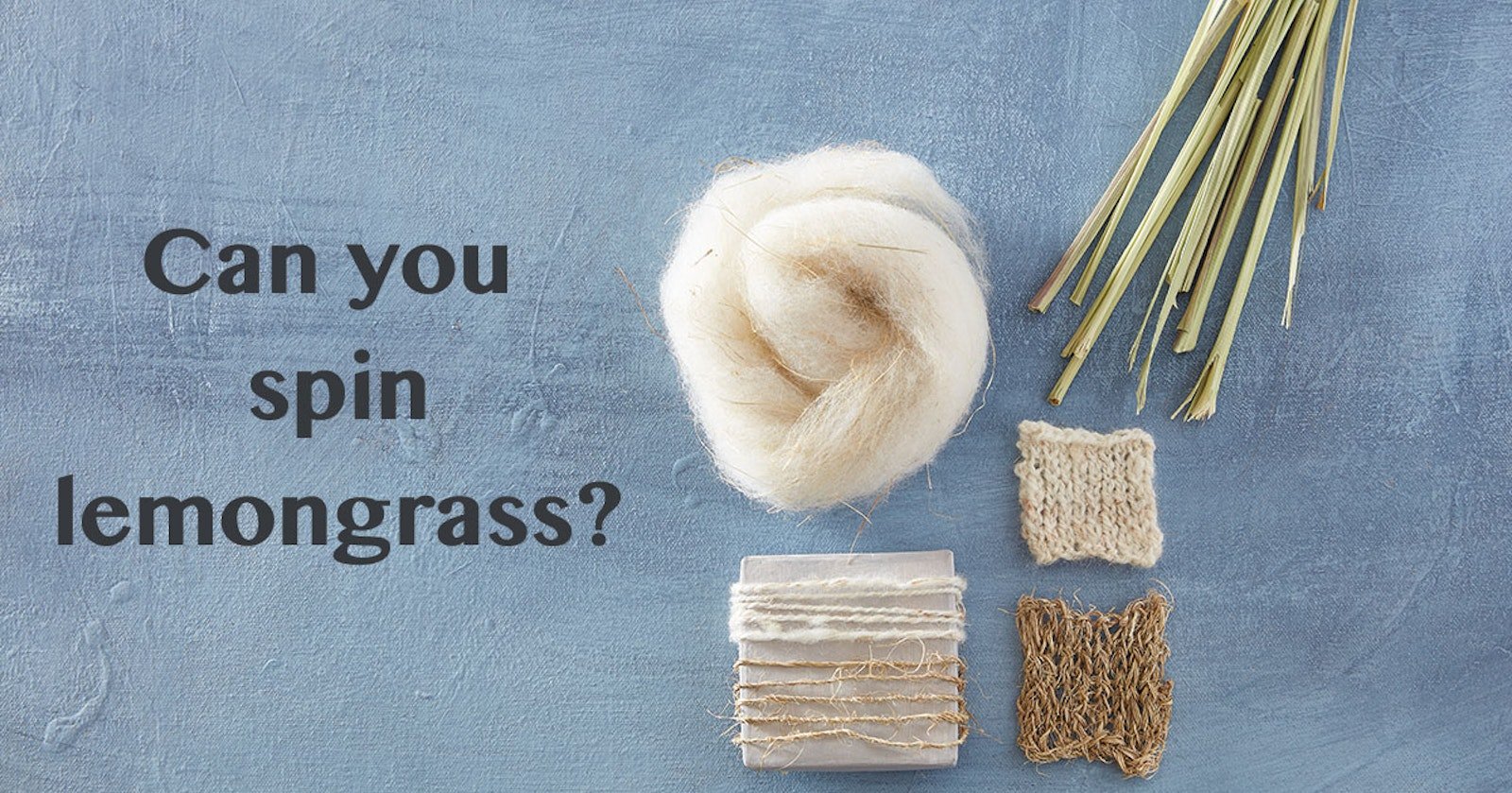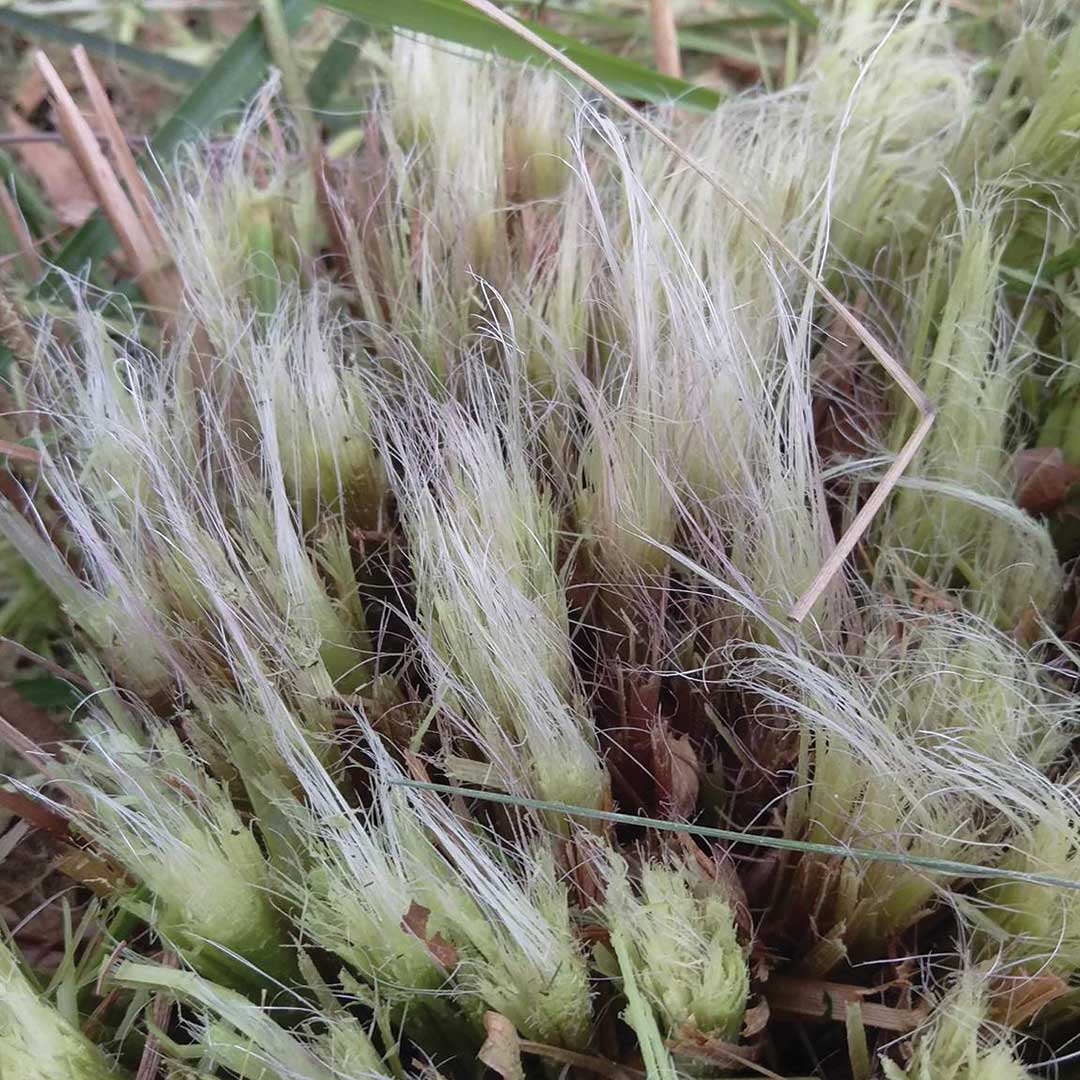Many of us begin spinning to make yarn we can’t buy in the big-box stores. There is a curiosity in the fiber arts; regardless of age, skill level, or purpose, we want to understand how yarn behaves in our knitted, woven, or crocheted projects. In the last few years, my curiosity has led me to bast fibers and the process it takes to prepare them for spinning.
When we think of bast fibers, the same few usually come to mind: flax, nettle, jute, and hemp. In reality, there is a world of fibrous plants to explore, and each has its own unique properties for those willing to experiment.
Meagan Condon retted and broke down lemongrass to spin. Photo by George Boe
I had the pleasure of taking a flax class with Stephenie Gaustad several years ago, which is where my journey with bast fibers began. She inspired a passion for bast fibers and for using the best tools for the task. Early 2017 granted me the opportunity to experiment further with flax: spinning commercially prepared strike (also known as strick), tow fibers, and a few flax and wool blends. I still longed to prepare my own bast fiber from start to finish. Abraham Maslow said in 1966, “I suppose it is tempting, if the only tool you have is a hammer, to treat everything as if it were a nail.” Bast preparation became my hammer, and since I didn’t have easy access to unprocessed flax, I was determined to find a nail.
After mowing, the lemongrass stems looked suspiciously like bast fiber. Photo by Meagan Condon
Lemongrass Outside the Kitchen Lemongrass is known for having a number of beneficial properties. Outside of the health benefits associated with consuming it, lemongrass is antimicrobial and is touted as a natural deodorizer and insect repellent. In 2014, the Universiti Teknologi MARA published a study on the use of lemongrass as a drilling fluid additive in oil and natural gas drilling. With such varied uses, surely it might have some application in the fiber arts field.
Each year, I grow lemongrass along the edge of my patio; it deters mosquitoes, and I use it in stir-fry. In autumn, I dry some stalks for the winter months, and my husband cuts the rest back. This year, we both noticed that the stubs of broken stems frayed into fibrous clumps. My husband stopped mowing and asked, “Do you want to try to make fiber?” This could be my nail.
—Meagan Condon
Meagan Condon is a librarian and fiber artist with more than a decade of spinning experience. She teaches spinning online and live-streams to a community of spinners with varying levels of experience at www.luthvarian.com.
To read more about how Meagan Condon harvested, prepared, and spun lemongrass fiber, download a copy of the Fall 2018 issue ofSpin Off.
Featured Image: Meagan Condon’s lemongrass fiber samples. Photo by George Boe



